Update: How WIV, CSIRO, EcoHealth fraudulent "discoveries" enable bioterrorism
WIV, CSIRO and EcoHealth collaborated for a decade on the origin of SARS. Their touted bat virus "discoveries" appear artificial. The intent is to misattribute a deliberate release as natural.
I’ve spent 3 years battling CSIRO for FOI access to documents related to their long engagement with Wuhan Institute of Virology. This collaboration, which also included EcoHealth Alliance, was convened by WHO in the aftermath of SARS in 2003 to help China search for its origin. Over the next decade Linfa Wang’s CSIRO group jointly produced 15 papers with WIV related to SARS origin, 11 on other bat-borne viruses and bat immunology, and a further 4 with the PLA’s Academy of Military Medical Science (AMMS).
The apotheosis was the announcement in a 2013 Nature paper, of the discovery of bat viruses with a SARS-like receptor binding domain (RBD) which - they claimed - definitively proved SARS originated in bats. But for the 7 FOI applications I’ve made - and hounded them over - and their extensive trawling through back-up systems, CSIRO have been unable to locate a single document to show the work of sampling bats, isolating and sequencing these viruses ever happened. Alarmingly, CSIRO’s archives appear to have been systematically erased. The only correspondence remaining with WIV is about unrelated side projects and small talk. Other documents and data (such as sequencing reads) that might support their claims are non-existent. When it comes to AMMS - there are no documents at all.
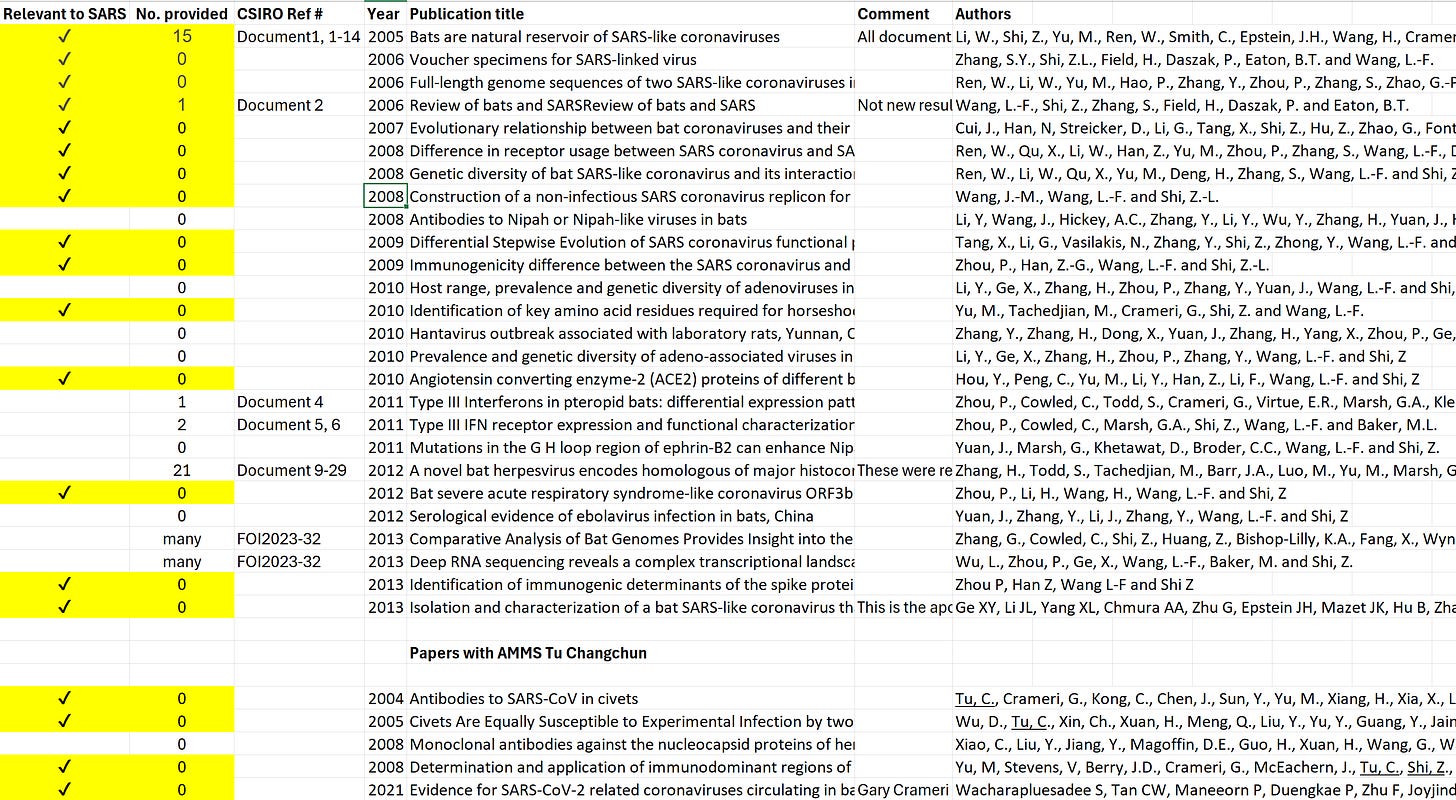
WIV’s gain of function experiments at CSIRO
Even as WIV claimed to be hunting in caves for bat viruses, they had also been learning to engineer artificial ones - with the assistance of Linfa Wang’s group at CSIRO’s biosecurity lab in Geelong, which hosted WIV interns such as Peng Zhou, Shi Zhengli and Zhang Huajun.
In 2007 the collaboration engineered artificial chimeric spike proteins by taking segments of SARS spike of different lengths, using them to replace the equivalent region of a bat coronavirus (Rp3) spike. From this they determined a minimal region of SARS RBD that could confer the bat virus with the ability to infect human cells. They also noted that these chimeric viruses were unable to infect bat cells.
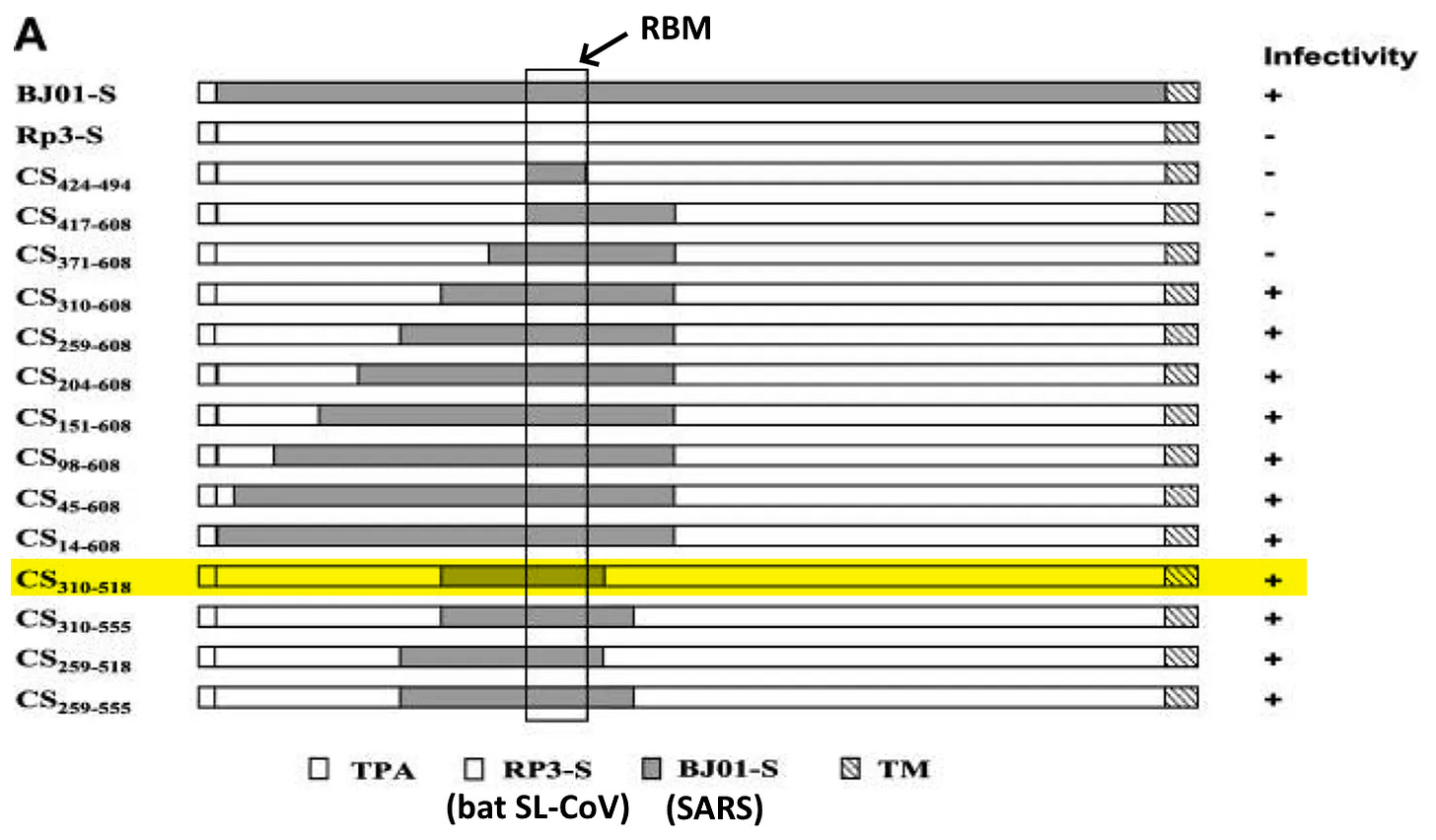
They had rivals. Ralph Baric of UNC and Mark Denison of Vanderbilt went a step further in 2008, engineering a live coronavirus from a full-length bat virus genome (synthetic, but based on HKU3), with its RBD replaced by that of SARS. They went on to show this could infect several types of human/primate cells and mice.
The WIV/CSIRO group had also wanted to make a full-length live virus, but had been unsuccessful.
The likely reason Baric/Denison succeeded, while WIV/CSIRO didn’t, is because Baric used human/primate/mouse cell lines. WIV/CSIRO were trying to use bat cell lines. SARS is a human virus and the RBD is the key determinant of host species it can infect. Still, if a virus is able to cross from one species to another, the RBD should be expected to attach to both to some degree. Linfa Wang’s reasoning was sound.
They didn’t give up. Another FOI email I obtained shows a WIV intern, Zhang Huajun, trying to engineer live chimeric viruses in the Geelong lab, with help from CSIRO staff. At this time, they were still trying to use bat cells, and were again unsuccessful.
But if they didn’t succeed in the lab - nature had already provided them what they were trying to engineer. Or had it?
Why did WIV succeed in Yunnan, where others failed?
In April, 2012 there was an incident in Mojiang County, Yunnan in which 6 miners clearing bat guano from an abandoned mineshaft were taken ill and hospitalized, 3 later died. Some of their samples were sent to WIV for testing. Shi Zhengli initially claimed one of their samples was seropositive for SARS. She later retracted this, instead agreeing with the medical staff who treated them that the disease was fungal. But the initial claim aroused interest, it seemed a clue in the search for SARS origins. Three groups including WIV visited the mine to sample bats and other wildlife. But WIV was the only one to claim the discovery of a SARS-related virus there - that virus is now known as RaTG13.
As if to explain the failure of the other groups to confirm their discovery, WIV hypothesized that coronaviruses were highly seasonal. They had encountered up to 50% seropositivity for alphacoronaviruses on one occasion, and as low as 7% on another. Of 276 bats sampled over all the trips, only one had a beta-coronavirus - a needle in a haystack. This makes confirmation by other scientists near to impossible. A core principle of the scientific method - reproducibility - is absent.

Curiously, in the 2013 paper WIV claimed they had already nearly completed a 12-month longitudinal survey in Yunnan. They retrospectively claimed had started this in April 2011, but at a different location - a cave near Kunming. It isn’t clear why they chose Yunnan for a longitudinal survey, since as of 2011 no SARS-related coronaviruses had been found there, and the miners’ incident was yet to happen. Were they acting on a hunch? Or did they invent this detail?
If it was prescience, it paid off. They soon announced 3 new virus discoveries - RsSHC014, Rs3367 and WIV1. RsSHC014 was (purportedly) collected in April, 2011 on the first excursion - so its sequence should have been known by the time of the miners’ incident.

SHC014 has a has an RBD that is somewhat divergent to SARS’, but similar in being of extended length, without the deletions that characterize other bat coronaviruses. This is key to conferring human and mammalian tropism. A 2015 Baric paper confirmed SHC014 is potentially human infectious. It was the closest known bat virus to SARS, but WIV hadn’t disclosed it. WIV1 and Rs3367, have an identical RBD, almost the same as SARS. These were collected in March and September 2012.
WIV’s claimed “discoveries” appear to be artificial chimeras
In the wake of SARS-CoV-2, I compared these viruses using SNAP diagrams. These provide more information visually than the more commonly used Simplot. They separate synonymous and non-synonymous mutations and indels, and they don’t use sliding window averaging. This makes changes in variability clear and allows visual identification of recombination breakpoints. Using SNAP it is immediately obvious there is an unusual relationship between the viruses.
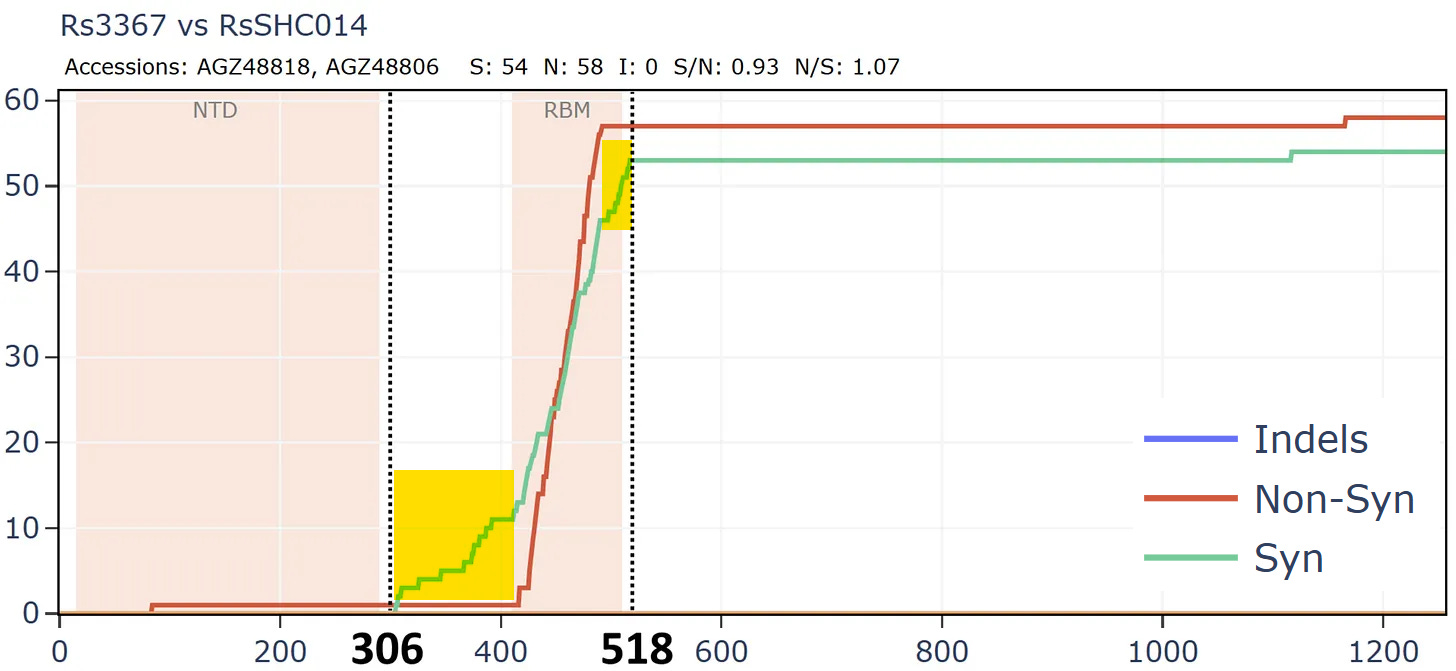
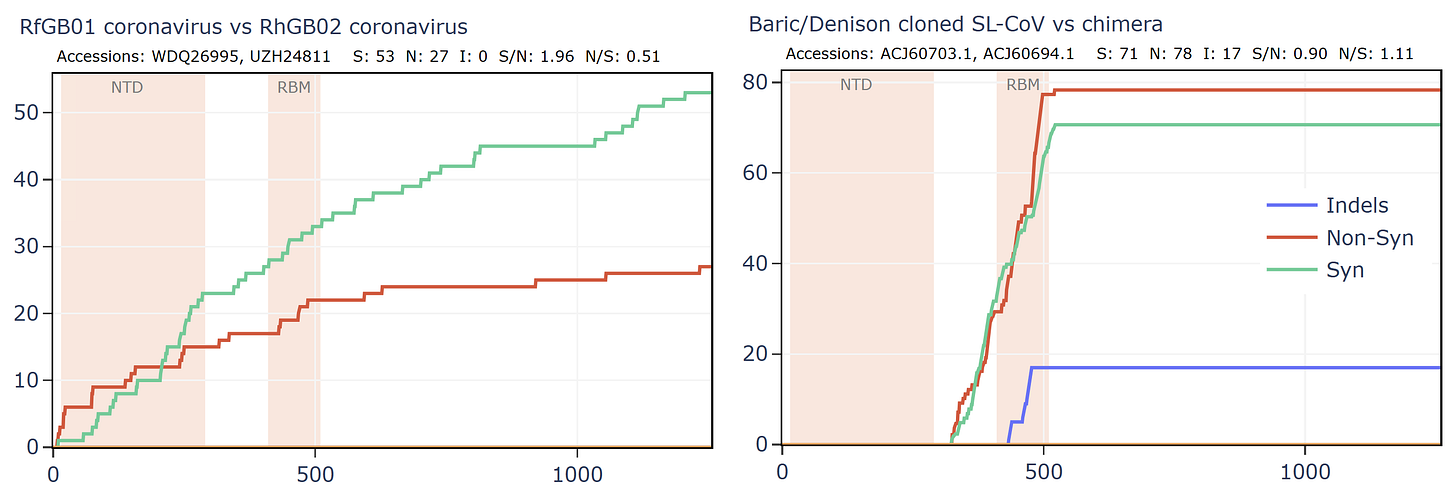
SHC014 and Rs3367 are 99.9% identical for most of the genome, excluding the RBD, which has many mutations. Non-synonymous mutations (those that result in a different amino acid) are all within the surface loop (RBM) that makes contact with the ACE2 receptor. While this region is expected to be more variable, the distribution is a surprisingly neat - there are no amino acid changes at all outside this zone. But most bizarrely, the breakpoints of the variable region are almost precisely at the locations WIV had identified in the 2007 experiment described above.
There is nothing magical about the numbers WIV derived in this experiment, they are just approximations of where a functional segment of protein begins and ends. But recombination happens during replication. The replication apparatus reads RNA and writes RNA - it has no knowledge of the protein structure or function that RNA might encode. Recombination occurs at locations in the genome that are effectively random* - and most often there is just one. A map of breakpoint locations in recombinant SARS-CoV-2 variants illustrates this.
*This is somewhat of a simplification. For a more extensive nuanced discussion on this subject please see my pre-print and/or leave me a comment below.
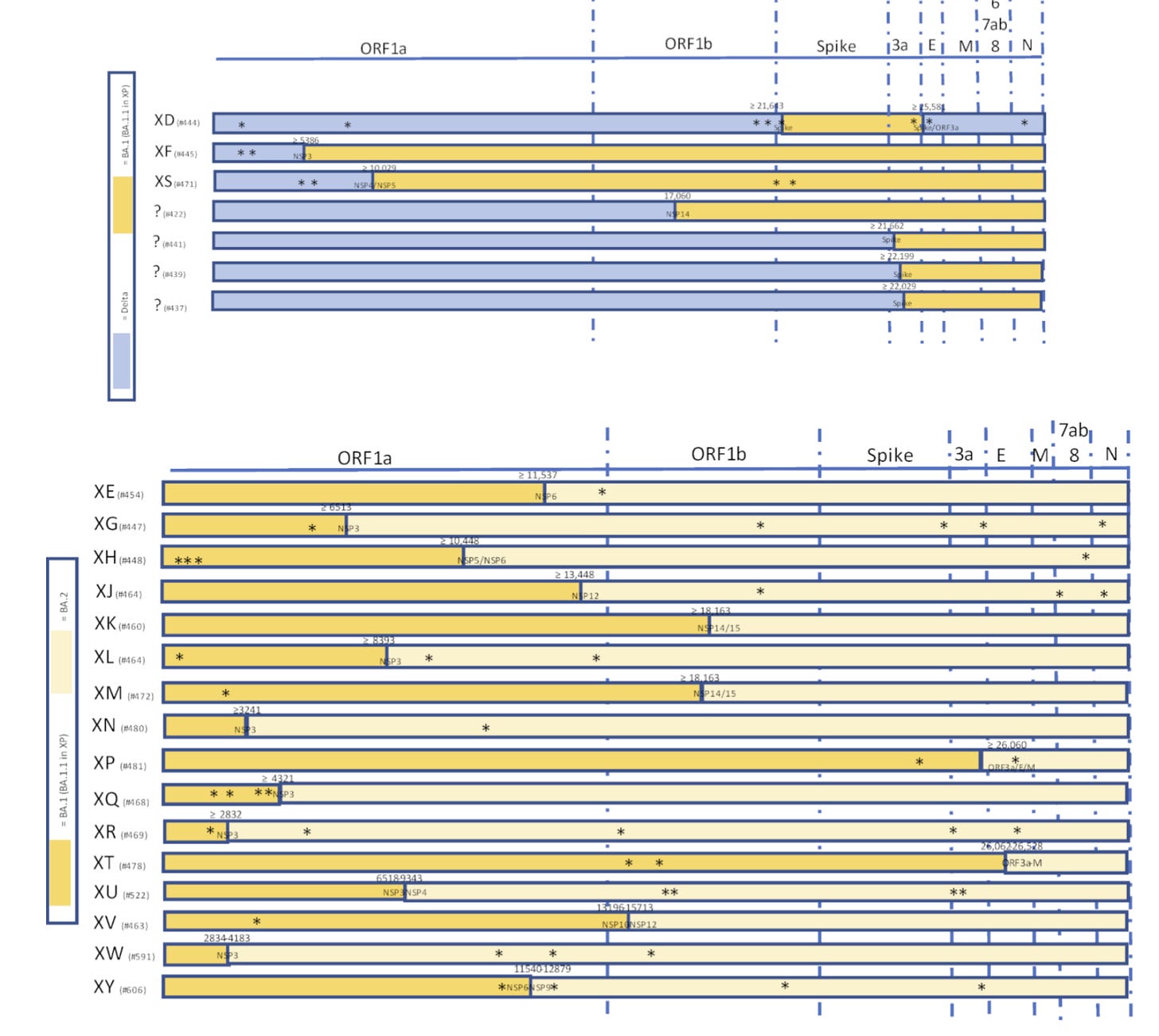
WIV’s viruses apparently won the genetic lottery by not only having two breakpoints, but at precise locations that they had predicted would be ideal for conferring human infectivity. If it came to be widely accepted that natural evolution is capable of this it there are some important - and dangerous - ramifications.
Rewriting the science of viral evolution and disease emergence
The implication is that rather than requiring gradual adaptation one mutation at a time (as was the understanding of spillovers historically) the ability to infect and a much harder feat - to transmit efficiently between humans - could be transferred from one virus to another instantaneously. This represents quite a challenge to any conventional model of viral evolution. Although recombination is an accepted phenomenon, no-one imagined it could happen so precisely and efficiently in nature - though it had long been demonstrated in the lab.
Surely this would be controversial, skeptical scientists would contest these results?
WIV seem to have avoided debate by:
Simply not mentioning it in the paper. Although the paper has a paragraph about recombination, it relies on software and finds different breakpoints that are far less obvious, if they are even breakpoints.
Co-opting influential western scientists e.g. Ralph Baric who had been postulating recombination as a mechanism for species jumps since the 1990s, and was amenable to the idea.
Publishing in the most prestigious of journals, Nature, with co-authors from Australian government agency CSIRO and the US government supported EcoHealth Alliance.
Following up quickly with more discoveries, such that the original would be supported by other sequences. The next “discovery” with a SARS-like RBD, LyRa11, was already in GenBank by August, 2013. It was “discovered” by Tu Changchun from AMMS, a collaborator of CSIRO, and a member of WIV’s advisory board.

CSIRO’s PLA collaborator Tu Changchun had already “discovered” another virus with the SARS RBD as WIV’s paper was published. Note the different species, R. affinis, which has a range extending into South East Asia, unlike R. sinicus which is confined to China. R. affinis is the host species of RaTG13.
More biowarfare applications
WIV followed up their claimed discovery with further viruses which purport to show that bat coronaviruses are frequently swapping functional protein domains at other genomic locations which might facilitate the instantaneous transfer of function and host tropism. This is a claim that nature engages in the same practices a bioweapon engineer might. A harmless zoonotic virus can instantly become human infectious by acquiring a new RBD. This is exactly what was proposed for the emergence of SARS-CoV-2 - a bat virus (similar to RaTG13) acquired the RBD from a pangolin virus (which had recently been discovered by the AMMS).
Another strange feature of WIV’s 2013 discoveries is a mysterious gene called ORFX. WIV1 and Rs3367 are over 99.9% identical, just a handful of mutations between them. Except that WIV1 has an entirely new accessory gene inserted. Accessory genes aren’t involved in replication, and they don’t form part of the virion structure. In a sense they are optional though they often have effects on the immune response, and they can be toxic. Thus, they may be of interest to a bioweapon engineer e.g. to carry a encode a “payload” protein, with little risk of making the virus replication incompetent. ORFX was previously unknown to science and has no close matches in GenBank. It appears in just one other of WIV’s many “discoveries” (WIV16).

Soviet defector Ken Alibek who rose to be deputy head of the bioweapons program described how their scientists had in the early 1990’s genetically engineered bacteria to express human regulatory peptides, short proteins that have can have great impact on the human body.
The protein encoded by ORFX is likely just a made-up “nonsense” protein. It has been shown to have only a minor immune modulatory effect. But it has the correct format (with a TRS) for it to be translated as a protein. The precedent of coronaviruses naturally acquiring entire novel protein coding genes in a modular way, is very dangerous. What if the gene instead encoded a toxin, or a regulatory peptide homolog as described by Alibek? This might be used to create far more dangerous pathogens than nature could ever evolve - and to misattribute the origin as natural.
WIV later extended this concept to include the immaculate transfer of a gene. In a Chinese language publication they claim another viral discovery Rs4084 has two variants which are all but identical - except for their ORF8 genes. One variant shares it’s sequence with several other viruses, and one is unique. This suggests a mechanism where a more pathogenic “payload” could be exchanged with the accessory gene of an otherwise mild, human endemic virus. SARS-CoV-2’s ORF8 is highly variable, and some variants are known to be more pathogenic.
What is the real purpose of this work?
It is my contention that WIV isn’t a scientific research organization, so much as an agency of espionage and scientific disinformation. I doubt their capability in bioweapon design, rather I suspect their primary role is in misattribution - through disseminating scientific disinformation including fabricated sequence data, also acquiring intellectual property and isolates from foreign partners. Unfortunately, many western scientists and institutions have fallen for their ruse, and have become “useful idiots”, adding credibility and amplifying WIV’s claims with little skepticism.
AMMS, on the other hand, are more technically capable, more secretive, if somewhat less trusted by foreign institutions. Still, even though AMMS are consistently named on Bioweapons Convention compliance reports, and now blacklisted by the US State Department, this hasn’t deterred international institutions (e.g. CSIRO, Institut Pasteur and NIH) from collaborating with them.
And what of CSIRO and EcoHealth? To me, Peter Daszak appears to be most credulous, but lacking the technical competence to fully understand the work that bears his name. In contrast, Linfa Wang has considerable expertise (much of which he has transferred to WIV). It is most curious that he left Australia around the time of the 2013 publication (while retaining a CSIRO email account) and that all of his correspondence and records have since vanished. An unexplained China-related data breach also occurred at the time.

Unfortunately, CSIRO executives have been uncooperative and dismissive of my claims. Although their FOI staff have made considerable efforts to find documents, there is no interest in investigating why hundreds or thousands of documents that clearly should exist, do not. EcoHealth is a private institution, not subject to FOIA. Although documents are surfacing via leaks and subpoenas, there is little that relates to scientific work. Possibly their main role was only administrative. From WIV and AMMS of course we can expect nothing.
Even without these documents, the science ought to speak for itself. WIV claims to have discovered extraordinary evolutionary mechanisms, that contradict conventional scientific understanding. These are apparently unique to a small subclade of bat viruses found in a handful of locations. No-one outside China has access to the caves. None of this work is reproducible. There is no documentation to support it, no truly independent corroboration. Western scientists, seemingly oblivious to the security context, have accepted WIV’s claims on faith in fellow scientists. Faith is not the essence of science, this puts us all at risk.


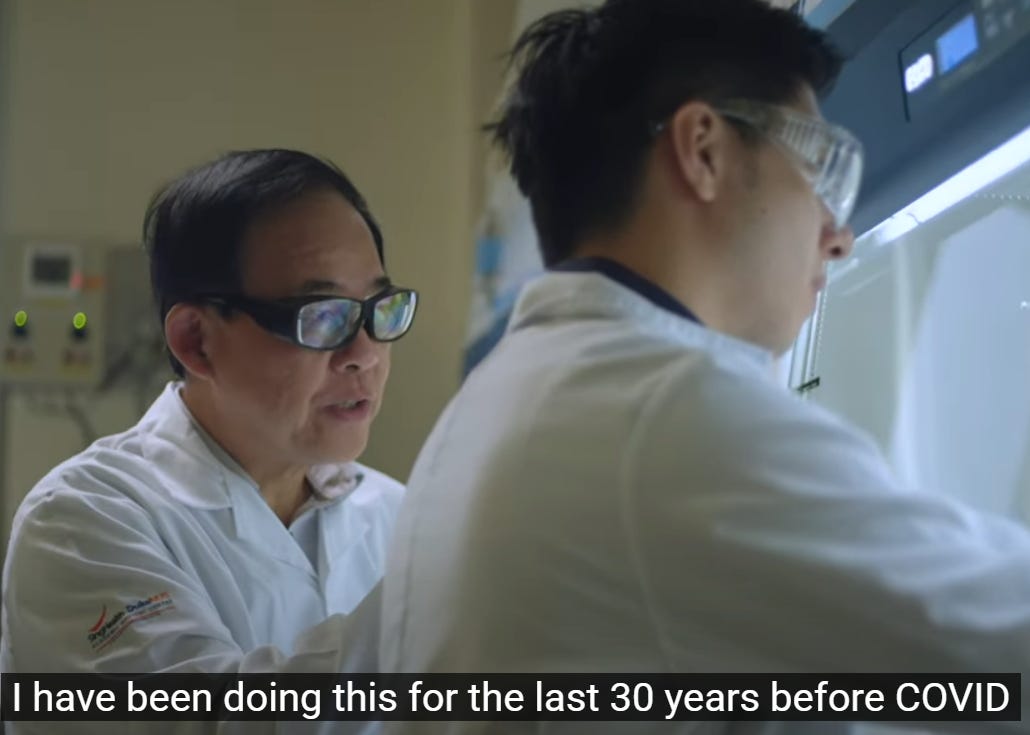

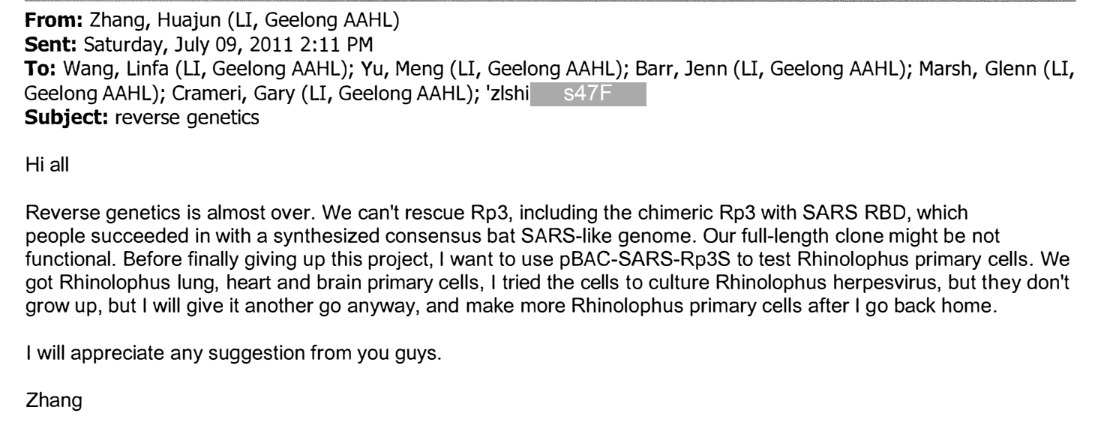

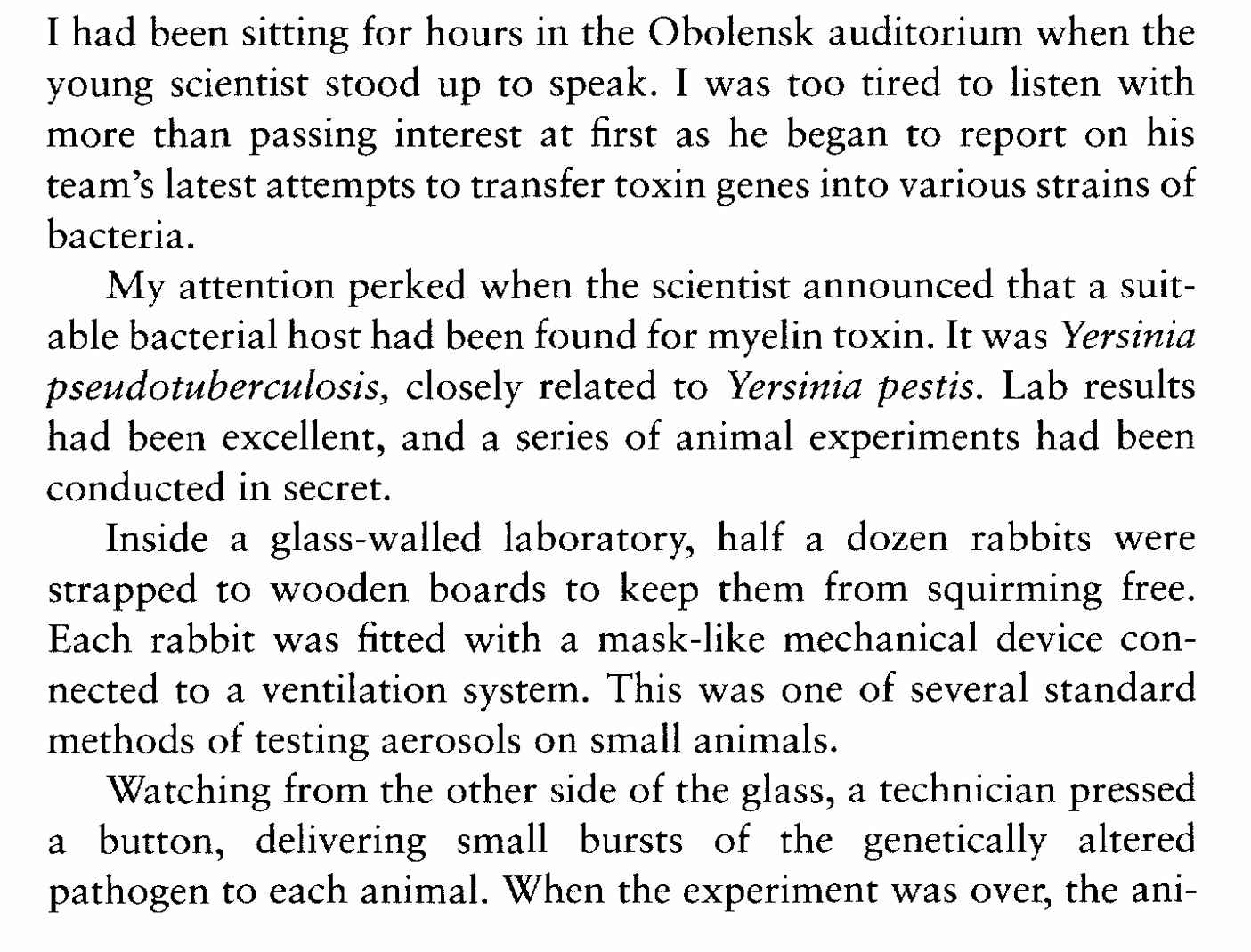
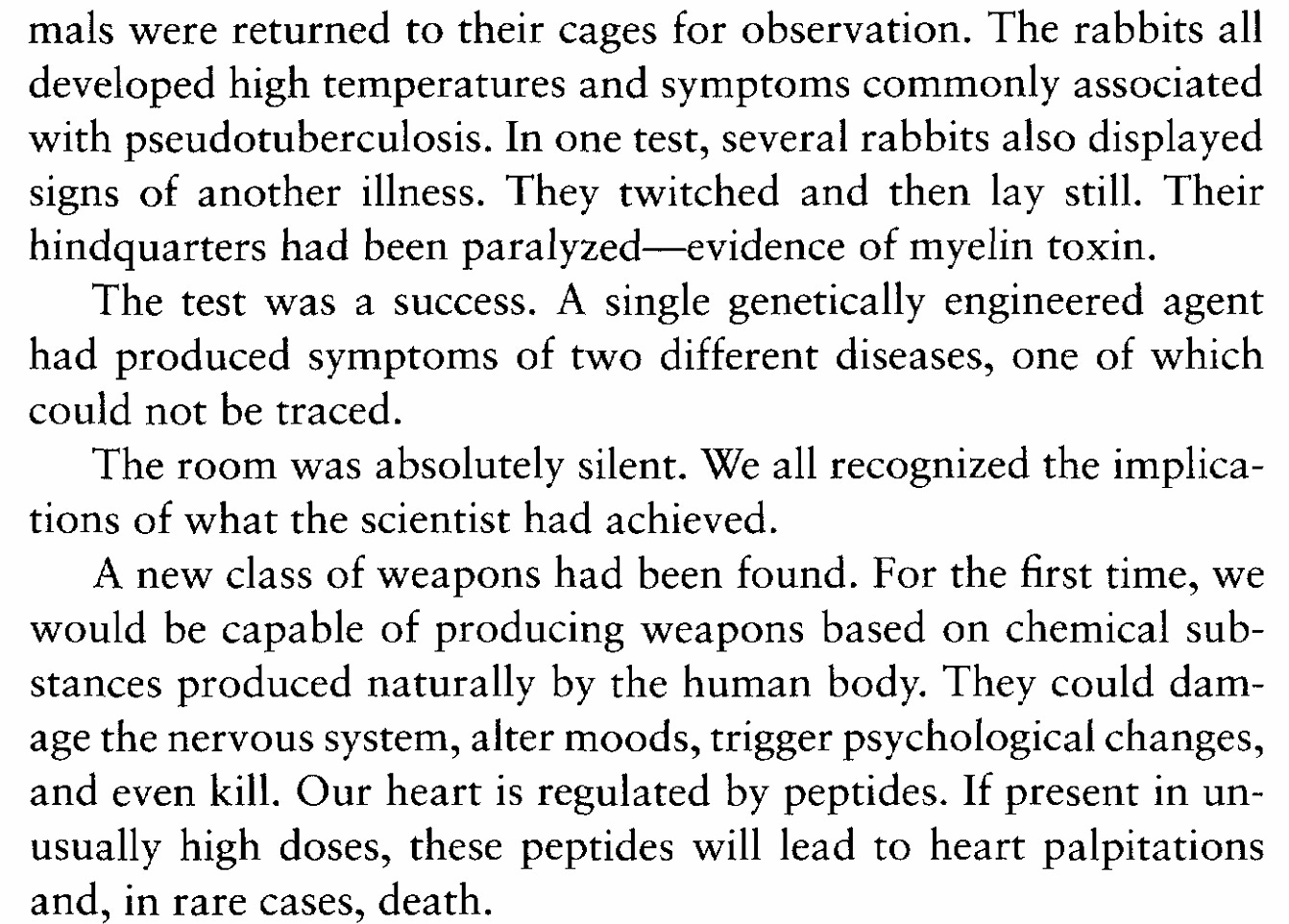
Have you shown the mutational distribution plots to an independent expert like Bloom? He's probably broad-minded enough to at least endeavor to explain some of this.
What a great article.
You should FOI Gary Crameri who created the SV40 immortalised cell line that allowed GoF work at the CSIRO
https://pubmed.ncbi.nlm.nih.gov/20011515/
And remember that RaTG13 and the BANAL viruses are synthetic (as in not even manufactured viruses merely in silico sequences) which is why Akiko Isikawa couldn't make them transmit.
They were created to cover the tracks for SC2